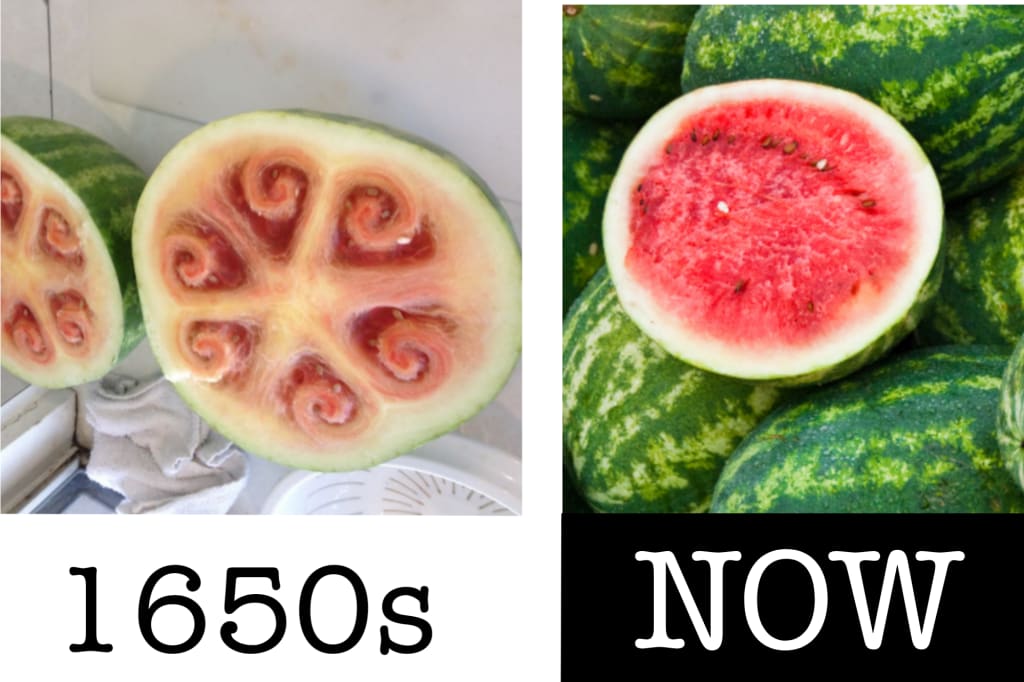You Won't Believe This..
Unrecognizable Transformations Uncovered

Food, the cornerstone of human survival and pleasure, has a rich and surprising history that often goes unexplored. From the humble banana to the iconic Thanksgiving turkey, the foods we know today have undergone remarkable transformations over centuries. Join us as we delve into the fascinating evolution of some of your favorite culinary delights.
Unraveling the Origins of Ketchup

Ketchup, a quintessentially American condiment, traces its roots back to ancient China over 1,000 years ago. Initially concocted from fermented fish guts and anchovies, this savory sauce made its way to Europe in the 18th century, captivating the taste buds of chefs and food enthusiasts alike. However, early European renditions of ketchup varied widely, from elderflower-infused concoctions to mushroom-based sauces. It wasn't until 1812 that horticulturalist James Mease introduced the first tomato-based ketchup recipe. Despite initial setbacks due to the use of toxic coal tar for coloring, modern ketchup soared in popularity with the introduction of a safer formula by the Heinz Company in 1904.
The Evolution of the Strawberry

Strawberries, beloved for their vibrant red hue and sweet flavor, have a surprisingly pale past. Originating in South America, ancient strawberries were white, larger, and more acidic, resembling their distant cousin, the pineapple. These "puren berries" were later introduced to Europe by a French spy in the 18th century, where they were crossbred with smaller wild strawberries to produce the modern-day strawberry we know and love. This culinary espionage led to a strawberry revolution, with the radiant red fruit eventually overshadowing its pale predecessor.
Unveiling the Prickly Past of Pineapples

Pineapples, with their spiky exterior and tropical sweetness, have a lineage that can be traced back to Central America. The humble pineapple's ancestors, such as the pinuela fruit, were smaller, sharper, and less palatable, requiring dilution with water to be consumed safely. Over time, selective breeding led to the development of larger, juicier pineapples, transforming them into the delectable fruit we enjoy today. From their prickly origins to their succulent present, pineapples have undergone a remarkable evolution shaped by human ingenuity and taste preferences.
The Metamorphosis of Watermelons

Watermelons, synonymous with summer refreshment, have undergone significant changes since their humble beginnings in Northeastern Africa. Early watermelons were smaller, more bitter, and had thicker skins than their modern counterparts. However, through centuries of cultivation and selective breeding, watermelons have evolved into the juicy, sweet fruits we know today. From their ancient origins to their artistic depictions in centuries-old paintings, watermelons have left an indelible mark on culinary history.
Banana's Evolution: From Proto-Nanners to Modern Delights

Bananas, often hailed as the world's most iconic fruit, boast a rich history spanning thousands of years. Believed to have been cultivated in regions such as Indonesia, the Philippines, and New Guinea, bananas reached Europe as early as 327 BCE, courtesy of Alexander the Great's expeditions. However, these ancient bananas differed significantly from their modern counterparts, being smaller, paler, and filled with seeds. Interestingly, bananas are technically berries, containing seeds, pulp, and developing from the ovary of a flower. Over time, farmers selectively bred bananas to be larger, brighter, and virtually seedless, although older varieties persist in some regions. The evolution of bananas continued with the emergence of Gros Michel, dominating the global market from 1850 to 1950. However, a devastating banana virus in the 1950s led to the decline of Gros Michel, allowing the Cavendish banana to take its place. While Gros Michel bananas can still be found in some areas, their rarity comes at a high cost. Despite the nostalgia associated with Gros Michel, many prefer the convenience and affordability of the Cavendish banana.
The Evolution of Corn: From Teosinte to Popcorn

Corn, a staple of diets worldwide, has undergone a remarkable transformation from its humble ancestor, teosinte. Originating in what is now Mexico thousands of years ago, teosinte bears little resemblance to the plump, juicy corn cobs we enjoy today. With fewer kernels contained within a hard outer shell, teosinte was a far cry from the modern corn we know and love. Through centuries of selective breeding, farmers gradually increased kernel size and eliminated teosinte's tough shell, resulting in the sweet, tender corn varieties available today. This remarkable evolution underscores the ingenuity and perseverance of agricultural communities throughout history.
In conclusion, the history of food is a testament to human innovation, adaptation, and creativity. From ancient condiments to tropical fruits, the culinary landscape is rich with stories of transformation and discovery. As we savor the flavors of today, let us not forget the remarkable journey that brought these foods to our tables.





Comments
There are no comments for this story
Be the first to respond and start the conversation.